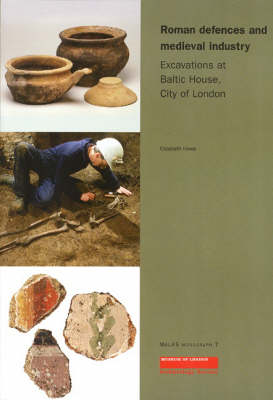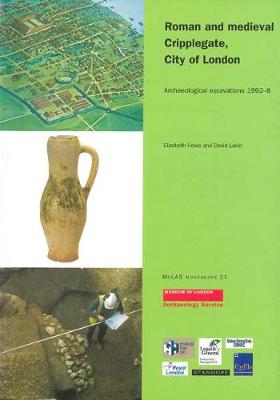MoLAS Monograph
2 primary works
Book 7
Excavations at the site of Baltic House uncovered evidence of occupation dating from Roman times onward. The earliest excavated feature was a Roman barrel-lined well dated AD 50-80 and containing the skulls of a horse and bull - perhaps a sacrificial offering. The well lay to the south of a large V-shaped ditch which formed part of a late 1st-century defensive boundary along the northeast side of the Roman settlement. A 2nd-century cellared building was also recorded here. In the medieval period the site lay in an area surrounded by a religious houses. The earliest medieval finds dated from the 10th or 11th century. Industrial activity between the 13th and 15th centuries included metalworking, represented by the manufacture of bells and kitchen vessels, and nitric acid distillation.In the 18th century the area was redeveloped with the creation of Jeffrey Square and smart terraced houses. At the end of the 19th century the Baltic Mercantile and Shipping Exchange was constructed. The building was badly damaged by a terrorist bomb in 1992, and the site is now occupied by the London headquarters of Swiss Re, a striking new office tower designed by Foster and Partners. This publication summarizes the archaeological sequence and history of one of London's most fascinating sites in a fully illustrated and integrated text.
Book 21
Roman and medieval Cripplegate, City of London
by Elizabeth Howe and David Lakin
Published 20 March 2004
This volume presents the results of work from five separate developer-funded excavations between 1992-8. Bronze Age field ditches were sealed by domestic buildings relating to the expansion of early Roman London after AD 70, contemporary with the timber amphitheatre located nearby beneath the Guildhall. The masonry fort was built in the early 2nd century AD and there was no evidence of a long-suspected predecessor. The fort's buildings seem to have gone out of use around the end of the 2nd century AD and its southern defensive ditch was backfilled. Extensive reoccupation came with the establishment of burgage plots after AD 1050. Twelfth-century development included buildings with cellars and evidence of bone- and metalworking. Birds of prey and high-quality pottery and glass imply the presence of a high-status person or property in the 13th century, but little survies from after this time.

